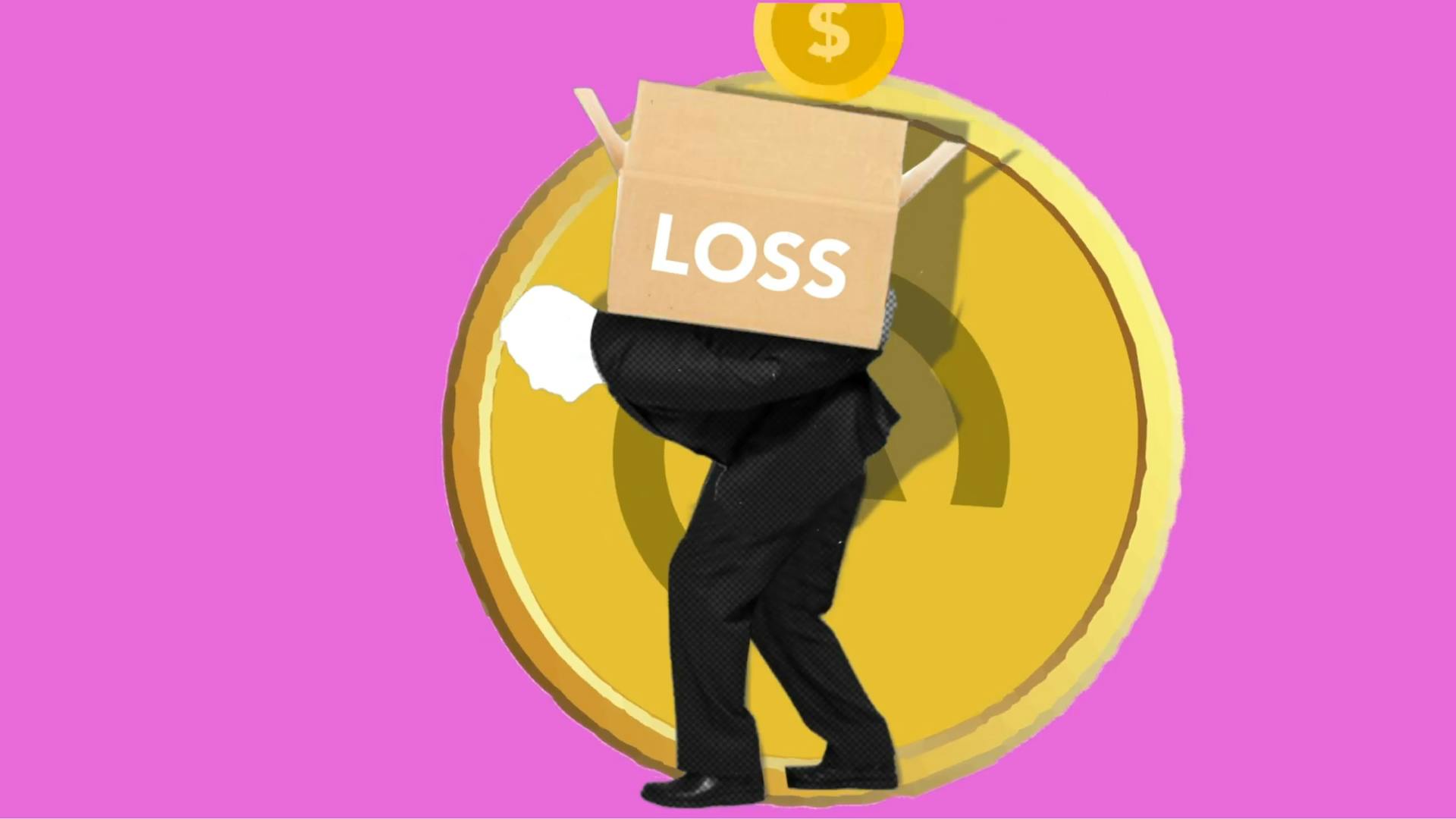
Debt factoring can be a game-changer for businesses struggling to manage their cash flow. By selling outstanding invoices to a third-party provider, businesses can receive immediate payment and avoid the risks of non-payment from clients.
This can be especially beneficial for small businesses with limited resources, as it allows them to focus on growth and development rather than getting bogged down in debt collection.
Debt factoring can also provide a much-needed cash injection, which can be used to pay off debts, invest in new equipment or staff, and take advantage of new business opportunities.
However, debt factoring is not without its drawbacks. For one, it can be expensive, with fees ranging from 0.5% to 3% of the invoice value.
You might like: Payment Strategies
What is Debt Factoring?
Debt factoring is a financial arrangement where a business sells its outstanding invoices to an external financial entity, known as a factor. This can provide a quick influx of capital, freeing up funds that would otherwise be tied up in unpaid invoices.
Related reading: Exploring Credit Inquiry Solutions for Smarter Financial Decisions
The upfront payment from the factor can range from 70% to 90% of the invoice value. For example, if you have an unpaid invoice for $10,000, the factor might pay you $9,000 upfront.
In return for releasing the advance, the factoring company charges a fee, known as a discount rate or factor rate. This fee can range from 0.5% to 7% of the total value of the invoices.
The factor will collect payments from your customers on your behalf and will keep a portion of the payment as their fee. The fee can be charged on a weekly or monthly basis until the factoring company has been paid by your customers.
Here's a breakdown of the process:
- You sign up for an account with a debt factoring company
- You work with a manager to send the invoice to the company
- The factoring company checks the credit of the company that has yet to make payment
- If everything checks out, the factoring company purchases the invoice at a discount
For example, if you have an unpaid invoice for $10,000, the factoring company might pay you $9,000 upfront, keeping $1,000 in reserve. They'll then charge a percentage each week until payment, and you'll receive the remaining balance after they've been paid by your customers.
Benefits of Debt Factoring
Debt factoring offers financial flexibility, allowing businesses to access increased funding as they generate more invoices. This scalability makes it an appealing choice for businesses with fluctuating sales volumes.
Unlike traditional loans, debt factoring doesn't require stringent requirements, making it an accessible alternative financing option for small businesses or those with limited credit history.
With debt factoring, businesses can benefit from assured cash flow, receiving an advance on their invoices on the same day each month. This leaves more time for them to focus on their core business.
Debt factoring is especially useful for businesses with a smaller number of high-value invoices, where the profit margin is healthy. It can transform the day-to-day running of a company, providing financial stability and peace of mind.
Intriguing read: Same Day Invoice Factoring
What Are the Disadvantages of?
Debt factoring can be a complex and sometimes costly way to manage your business's cash flow. Higher interest rates than traditional bank loans can make it a less attractive option for some businesses.
Factor rates may be as high as 7% of the value of your unpaid invoices over a pre-agreed time period. This can add up quickly, especially if your customers take a long time to pay.
Unless specifically arranged, factoring is with 'recourse', which means you will be liable to cover any invoices that aren't paid. This can be a significant risk, especially if you're factoring a large number of invoices.
The slower your customers pay, the higher the factoring fees. This means that if you're factoring a lot of invoices with long payment terms, you may end up paying more in fees than you would with a traditional loan.
Here are some of the key disadvantages of debt factoring:
- Higher interest rates than traditional bank loans
- May damage confidence in your business as your clients become aware of the factoring
- Unless specifically arranged, factoring is with ‘recourse’ which means you will be liable to cover any invoices which aren’t paid.
- The slower your customers pay the higher the factoring fees
Understanding Debt Factoring
Debt factoring is just another term for invoice factoring, and it's used interchangeably. It's a financing option that provides flexible funding directly linked to sales, making it appealing for businesses with fluctuating sales volumes.
A different take: What Is Sales Tax
Unlike conventional loans, debt factoring doesn't require stringent requirements, making it an accessible alternative for small businesses or those with limited credit history. This is particularly true for businesses that struggle to secure traditional loans.
The costs of debt factoring vary depending on the size of the invoices, the credit history of clients, the industry, and the stability of the business. There are two basic charges: the advance, which is the percentage of the amount given up front, and the rate, which is the cost of financing. Rates can range from 1.5% to 4% per 30 days, with advances averaging around 75-85%.
Debt factoring is crucial for maintaining a stable cash flow for businesses. It's especially important for trucking companies, as they often have to cover fuel and maintenance costs while waiting for invoice payments.
To qualify for debt factoring, businesses typically need to demonstrate that they have creditworthy customers, generate a certain amount of dollars in sales per month, and have customers given at least 30 days to make payments.
Before considering debt factoring, businesses should assess their needs. This includes evaluating whether they need to bridge a temporary cash gap or address a long-term issue with their cash flow. Businesses should also consider how quickly clients pay their invoices, as this can impact the benefits of debt factoring.
Explore further: Retained Cash Flow / Net Debt
Factoring can be particularly valuable for businesses dealing with customers prone to late payments or operating in sectors where delayed payments are commonplace. By entrusting credit control to the factoring company, businesses can mitigate the risk of bad debts and safeguard their financial stability.
Here are some key benefits of debt factoring:
- Speed up payments
- Offload debt collection
- Operate without piling on debt
Factoring serves as a short-term solution to address immediate cash flow issues, but businesses should evaluate how it aligns with their long-term financial strategy. This includes exploring methods to enhance overall financial stability and reduce reliance on external financing sources.
Debt Factoring Process
Debt factoring is a process that can help businesses access cash quickly. A business delivers goods or services to its customers and issues invoices for payment.
The business then sells these invoices to a factoring company at a discounted rate. This allows the business to access cash quickly and unlock funds tied up in unpaid invoices.
For your interest: Cash Flow
The factoring company advances a percentage of the invoice amount to the business, usually within 24-48 hours. This provides immediate cash flow relief and helps bridge the gap between payables and receivables.
Here's a breakdown of the typical debt factoring process:
- Invoice Generation: A business delivers goods or services and issues invoices for payment.
- Selling Invoices: The business sells these invoices to a factoring company at a discounted rate.
- Advancing Funds: The factoring company advances a percentage of the invoice amount to the business.
- Collection: The factoring company takes over the responsibility of collecting payments from the customers.
The factoring company will deduct their fees from the invoice amount, usually on a weekly basis, until the customer pays. The total factor rate can add up quickly, so it's essential to understand the terms and conditions before entering into a factoring agreement.
How It Works
Debt factoring is a process that can provide your business with much-needed cash flow relief. A factoring company advances a percentage of your invoice value, usually within 24-48 hours.
The amount advanced can range from 85% to 90% of the invoice value, depending on the factor's assessment of the risk. For example, in one scenario, a business received 85% of a £10,000 invoice, which is £8,500.
Suggestion: Value of Money
The remaining amount, typically 15% of the invoice value, is held in reserve by the factoring company until the customer pays. This reserve amount can be deducted from the advance payment to determine the final amount paid back to the business.
The factoring company charges a factor rate, which can be a percentage of the invoice value, usually weekly. In the example, the weekly factor rate was 2% of the £10,000 invoice, resulting in a £200 fee every week.
The total factor rate is calculated by multiplying the weekly fee by the number of weeks until the customer pays. In this case, the total factor rate was £600.
Here's a breakdown of the key steps involved in the debt factoring process:
- Invoice Generation: A business delivers goods or services and issues invoices for payment.
- Selling Invoices: The business sells these invoices to a factoring company at a discounted rate.
- Advancing Funds: The factoring company advances a percentage of the invoice amount to the business.
- Collection: The factoring company takes over the responsibility of collecting payments from the customers.
The factoring company will deduct their fees from the reserve amount, and the remaining amount will be paid back to the business. This process can help your business access cash quickly and efficiently.
Internal or External?
Debt factoring is an external financial arrangement. Businesses sell their accounts receivable to an external financial institution, which takes over the responsibility of managing and collecting these accounts.
This external entity handles the entire collection process, relieving the business from the burden of chasing payments from customers. The factoring company provides the business with a significant upfront payment, offering immediate relief to its cash flow challenges.
The factoring company deducts their fees from the full payment of the invoices by customers, and then releases the remaining amount to the business.
A fresh viewpoint: Nevada Invoice Factoring Company
Managing Cash Flow
Debt factoring can help with cash flow by freeing up money tied up in unpaid invoices.
The capital advanced to a business can be immediately reinvested or used to cover business expenses, without the need to pay it back.
Debt factoring offers rapid relief to cash flow issues, ensuring companies have the funds for day-to-day expenses, employee salaries, growth investments, and seizing business opportunities.
Worth a look: Rental Income and Expenses
Adequate working capital is vital for meeting short-term obligations and sustaining operational efficiency, which debt factoring optimizes by unlocking funds tied up in unpaid invoices.
Immediate cash flow relief is crucial for businesses grappling with cash flow challenges due to slow-paying customers, and debt factoring emerges as a swift solution.
With debt factoring, businesses can benefit from assured cash flow, leaving more time for them to focus on their core activities.
Businesses with a smaller number of invoices at a higher value, and a healthy profit margin, can particularly benefit from debt factoring.
Here are some benefits of debt factoring for cash flow management:
- Immediate access to cash
- Reduced reliance on loans or credit lines
- Improved cash flow management
- Increased operational efficiency
Debt factoring can provide fast access to funds, which is essential for businesses to take advantage of timely opportunities, avoid taking on debt to cover expenses, and keep running their business without interruptions.
By selling their unpaid invoices to a factoring company, businesses can free up time and resources to focus on other areas of their business, such as marketing and growth.
Frequently Asked Questions
Why is debt factoring short-term?
Debt factoring is short-term because it creates debt that must be repaid as soon as the customer pays the invoice. This temporary debt can become a long-term issue if payment problems arise.
What is the difference between factoring and debt finance?
Factoring advances most of an invoice's value upfront, typically 70-90%, whereas debt collection companies only collect payment from the debtor and don't provide upfront funding. This key difference makes factoring a more immediate solution for businesses in need of cash flow.
Sources
- https://www.nerdwallet.com/uk/business-loans/what-is-debt-factoring/
- https://favouremeli.com/business/debt-factoring/
- https://www.businessexpert.co.uk/debt-factoring/
- https://cashflowfrog.com/blog/debt-factoring-meaning-pros-and-cons/
- https://fundingsolutions.co.uk/finance-guides/guides/debt-factoring-can-it-help-your-business/
Featured Images: pexels.com


